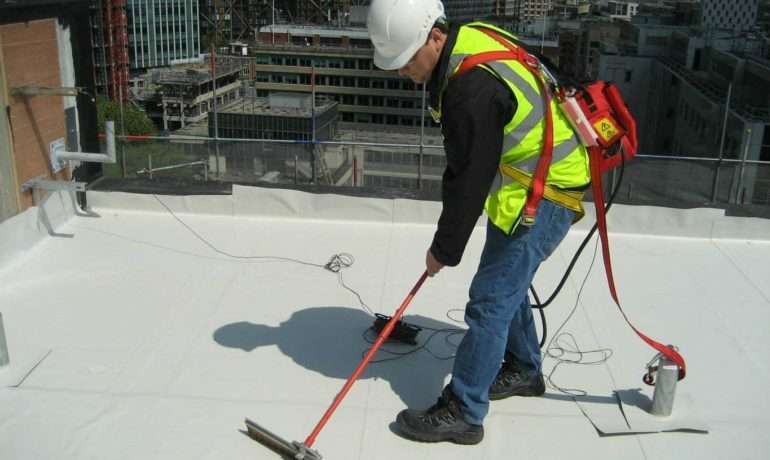There are several ways of finding a leak in your roof before you notice rainwater dripping onto your carpet or floor. Don’t wait until it’s too late—there are many ways of detecting roof leaks early. Unfortunately, it’s not as easy as climbing up to your flat roof in your New York home, trying to detect a breach. Most leaks will not be visible to the naked eye. The pros use several advanced techniques of roof leak detection that can help you save a lot of money in the long run. Here are some of the most common professional methods of leak detection; find out which one is right for you.
Electronic Leak Detection
If you have a flat roof membrane, electronic leak detection is one of the best ways to find a leak. There are several types of electronic leak detection, including electronic field vector mapping. This method basically relies on passing electrical currents over and under the waterproofing membrane, so that any leaks in that membrane can be detected. With electronic leak detection, you don’t need to actually do anything to your roof. There are two types of electronic leak detection: low voltage and high voltage.
- a) Low voltage is best for flat roofs
- b) High voltage is best for roofs with slopes and can even be used on vertical planes.
As the names suggest, the high voltage method uses more voltage, but both are perfectly safe. The roof leak tester will actually be able to hear the breach and can help you understand what you can do to fix it.
The Wet Method
This is the old fashioned way of roof leak detection. While the wet method might still be effective or applicable in some structures, it can be risky because the tester actually has to flood your roof with water to detect the breach. Doing so is time consuming and could trap water beneath the membrane.

